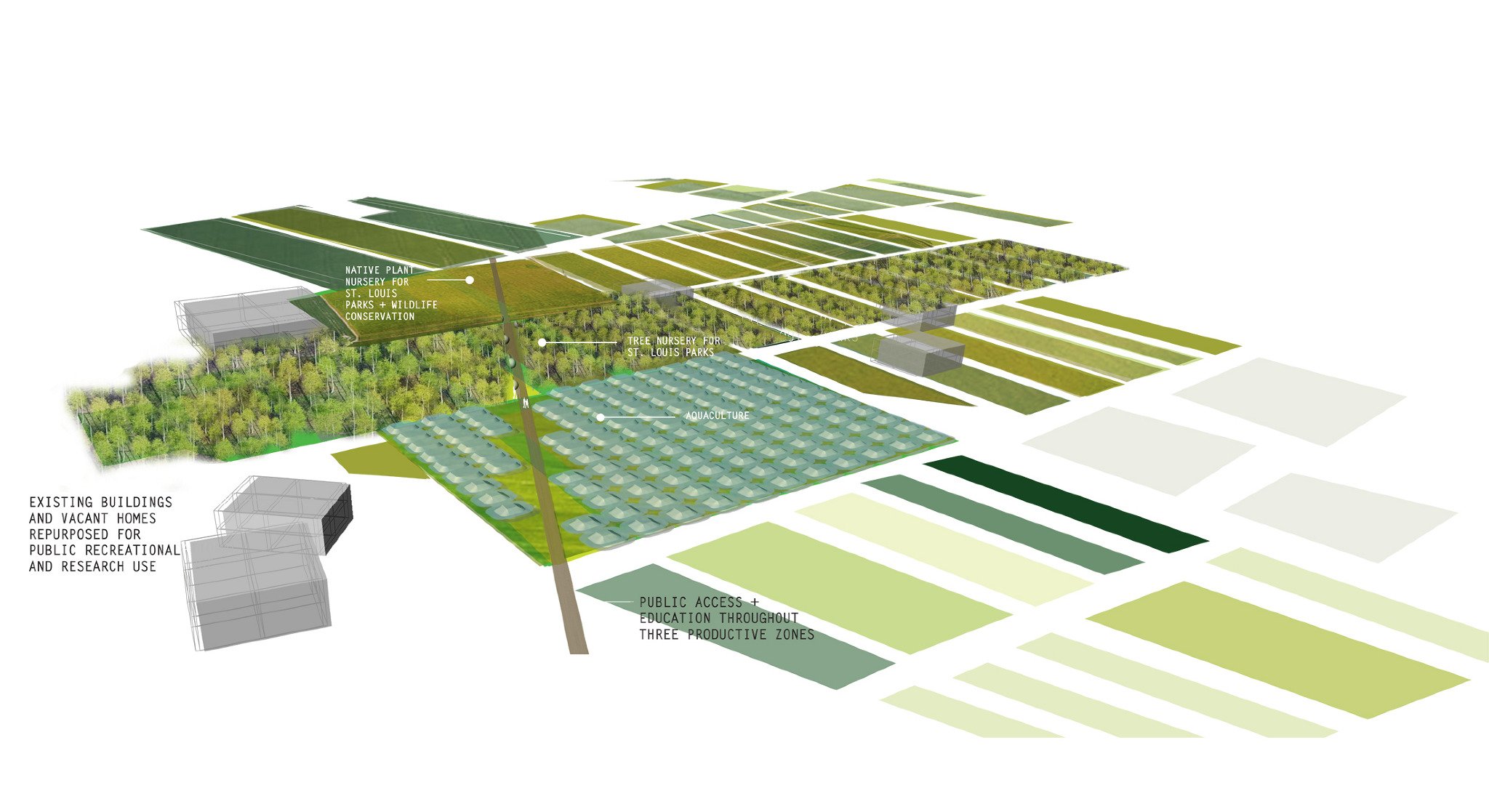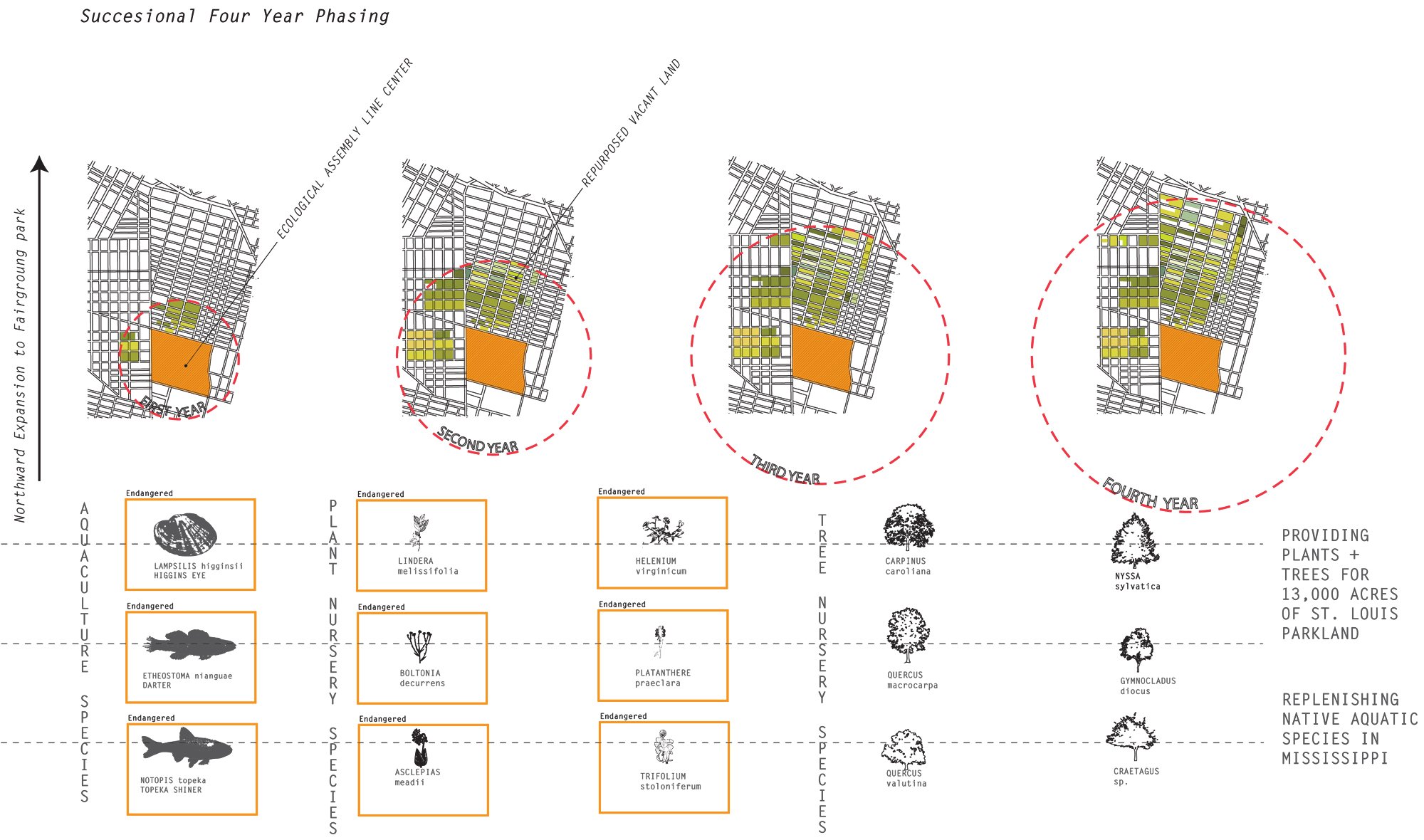
Pruitt-Igoe Now Competition
Winner, 2012, co-designed with Heather Dunbar
As one of the foremost sites in the country that speak to a “failure of modernism”, our proposal for Pruitt-Igoe serves as a memorial and a beginning for the current site to be absorbed and integrated into the surrounding urban fabric.
Our proposal reimagines the current site of Pruitt Igoe as a center for an ecological assembly line, serving as the point where plots of reclaimed land not only become productive ecological and economic generators for the city, but as a site, facilitates a process of environmental justice. Beyond urban agriculture, our proposal consists of tree nurseries and plant nurseries that capitalize on the favorable growing conditions of St. Louis to provide plantings and trees to over 13,000 acres of St. Louis parks as well as countless job opportunities. Aquaculture basins grow native fish and mussels species, replenishing the native species of the Mississippi that face population threats due to new, invasive species. Drawing on St. Louis's significance as a manufacturing and industrial heart along the Mississippi, and the 1987 plan for the Pruitt-Igoe site to become the center of an industrial warehouse complex, our ecological assembly line is the beginnings of reclaiming the land for productivity, yet its outputs are not goods, but rather the ecological effects and biodiversity of the surrounding urban fabric, new opportunities for education and recreation and the important connections between well-being, public health, racialized health disparities and the environment.
Our proposal for Pruitt-Igoe as an urban forest center for this assembly line proposes unused and vacant lots in the north to join into a green corridor that radiates from Pruitt-Igoe's current site. The site of Pruitt-Igoe itself will be kept in its urban forest condition serving as memorial and center. Vacant houses north of the site can be repurposed for educational and recreational facilities as part of the productive green corridor.
The demolition of Pruitt-Igoe was supposed to signal the end of modernism, but the deeply embedded, inequitable social structures that set it up for failure continued to prevail. Rather than close-ended social engineering and the historical politics of racial segregation through architecture that the original housing complex created, our proposal designs and sets forth new sets of possibilities, allowing for flexible use and a multifaceted set of outputs.


